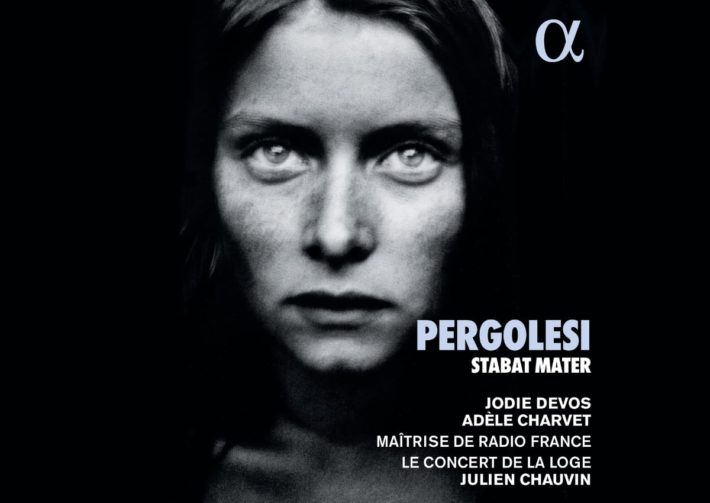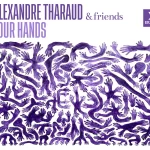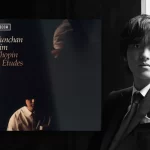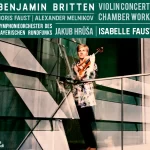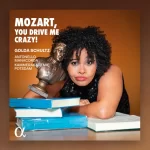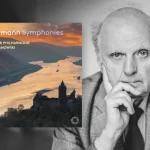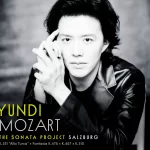Giovanni Pergolesi’s Stabat Mater, in its immense popularity, was performed some 82 times in 18th-century Paris at its Concert Spirituel, which is often regarded as the first public concert series; Bach even made an arrangement (Tilge, Höchster, meine Sünden, BWV 1083) in the 1740s. While there is no direct source that describes how the work was arranged for a Concert Spirituel, Julien Chauvin creates one based on several manuscripts for dessus (soprano), bas-dessus (mezzo-soprano), and a two-part children’s choir. The Latin pronunciation deviates from the original, following what one would have heard in Paris at the time.
Stabat Mater Dolorosa features lovely singing by both Jodie Devos and Adèle Charvet. Devos’ silvery tone adapts fluidly to different dynamics while Charvet’s thicker one adds a satisfying richness, particularly to the intervallic passages. The choir, however, is a questionable choice of arrangement. A 2020 recording with Sandrine Piau and Christopher Lowry as soloists and Christopher Rousset conducting Les Talens Lyrique does not include one. Less is indeed more here: with just Piau and Lowry (who are very well-matched in timbre), there is greater clarity overall. The dissonances have more emotional sting and the harmonic suspensions have better distinction. I also preferred the slower tempo which more vividly reflects the movement’s mournfulness.
Both ensemble and soloist (Devos), despite delivering Cujust animam (track 2) with utmost elegance, aren’t responsive enough to Pergolesi’s interesting phasing patterns: two note phrases are too legato and the accents need more sharpness. (Rinaldo Alessandrini and Gemma Bertagnolli on the Opus 111 label have more pep-in-the step, if you will, which works quite well here). The mezzo aria, Quae morebat et dolebat (track 4), whose upbeat music belies the much darker meaning of the words, has a tasteful amount of drive and buoyancy that Pergolesi seems to have intended. Perhaps less successful is the Sanctus Mater duet, with a few issues in soloist-ensemble balance. I found the voices occasionally lost in the intertwining instrumental parts. Rousset and Les Talens Lyrique have another recording featuring Barbara Bonney and Andreas Scholl (Decca, 1999) that delivers with more vocal clarity, particularly in the deeper voice registers.
Related Posts
- Review: “Sturm und Drang” – The Mozartists, Ian Page
- Review: “La Vanità del Mondo” – Philippe Jaroussky, Artaserse
- Review: Charpentier – Histoires Sacrées – Ensemble Correspondances, Daucé
Sharing a common key as the Pergolesi, ‘La Passione’ is one of Haydn’s 19 Sturm und Drang symphonies. As far as a period performance goes, some adjustments have been made, namely an organ that stands in for oboes and horns – a choice, Chauvin says, was inspired by the presence of such an instrument in the Salle des Cent-Suisses (where the Concert Spirituel were held). This swap is noticeable in the opening of the Adagio (track 14). While it does lend additional depth of sound, it ultimately drowns out the pulsating downbeats of the low strings, an element crucial in creating the slow, foundational heartbeat. Softer dynamic shadings are quite sensitive but one thing that’s missing on the whole is a contrast essential to the dichotomy of solemnity and emotion. The subito fortes, for instance, seemed hesitant and a bit tepid. In this regard, Antonini’s rendition from his Haydn 2032 cycle proves far more satisfying.
The Allegro di molto (track 15) is where the instrumental substitution is quite problematic despite an otherwise solid effort from the strings. Haydn’s original orchestration relies extensively on the oboes and horns, which drive the blasts of furious energy and highlight distinct layers of sound. The organ unfortunately adds an out-of-place and distracting timbre. But perhaps instrumentation isn’t the only issue: the interpretation needs less ‘polish’ to capture its true spirit. I reviewed a performance on the Alpha Label with Barbara Hannigan conducting the Ludwig Orchestra (April 2020) which had a captivating raw fury, down to the intense sixteenth note surges and rigorous scratching of the bows. Granted, this was a performance on resonant modern instruments, but the character came through much more persuasively.
Despite not always agreeing with Chauvin’s musical choices, I did find his foreword well-written and interesting. In describing the musical scene and performance practice of the 18th century, there was a clear sense that these choices were made with carefully researched context. Julien Dubrique’s short essay on the Stabat Mater in Paris gives us additional insights into how Pergolesi’s masterpiece was part of a dynamic musical era.
While other recordings will serve as preferred reference points, we can’t ignore that Chauvin’s is conceived with a mindful attention to historical detail. A careful listen will offer yet another perspective on these two works.

Pergolesi – Stabat Mater
Haydn – Symphony No. 49, “La Passione.
Jodie Devos – Soprano
Adèle Charvet – Mezzo-Soprano
Maîtrise de Radio France
Le Concert de la Loge
Julien Chauvin – Conductor
Alpha, CD 784
Included with an Apple Music subscription:
Latest Classical Music Posts
- Review: “Four Hands” – Alexandre Tharaud
- Review: Chopin – Études – Yunchan Lim
- Review: Britten – Violin Concerto, Chamber Works – Isabelle Faust
- Review: “Mozart, You Drive Me Crazy!” – Golda Schultz, Soprano
- Review: Schumann – Complete Symphonies – Dresdner Philharmonie, Janowski
- Review: Mozart – The Sonata Project, Salzburg – Yundi, Piano
Read more classical music reviews or visit The Classic Review Amazon store
Follow Us and Comment:
Get our periodic classical music newsletter with our recent reviews, news and beginners guides.
We respect your privacy.

